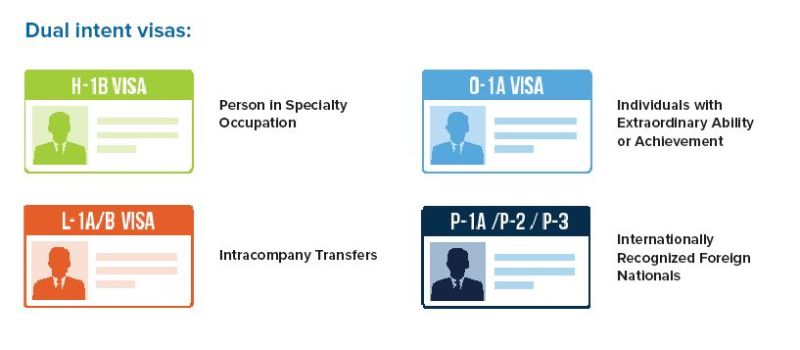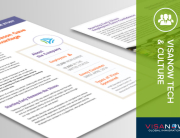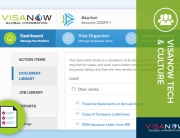Sponsoring a green card for a foreign national employee is rewarding for both you and the international worker. But the application process can be lengthy and complicated, which is why taking a strategic approach is pivotal for streamlining your tasks and avoiding headaches down the line.
Learn how to develop the best game plan for the application process by reading these five tactics for filing a successful green card petition.
1. Make sure your employee is on a dual intent visa.
Not all employment-based visas are created equal. Some are “dual intent,” meaning those employees can state their intent to apply, and then petition, for permanent residency while they’re in a temporary status. International workers on dual intent visas are more likely to be able to enter the United States without being questioned about their intent to immigrate. If you begin the petition process for an employee on a non-dual intent visa, when traveling outside the country he or she could be stopped at the border under suspicion of intent to live in the United States permanently, and could be kept from entry.
It’s possible to apply for a green card while on a non-dual intent visa, but it’s recommended that your employee switch to an H-1B or an L-1 visa before beginning the application process, if possible.

2. Create a strategy for testing the labor market.
The green card process requires PERM labor certification, which protects skilled U.S. workers from displacement by unskilled foreign nationals. You’ll need to complete the PERM process for both EB-2 Advanced Workers and EB-3 Skilled or Other Workers categories prior to filing the green card petition.
During the PERM process, companies prove they took reasonable measures to fill an open position with a U.S.-based worker by conducting a series of recruitment tasks, which includes posting several job orders over specific periods of time, as stipulated by the Department of Labor (DOL). This multi-step process typically takes 10 to 12 months without an audit, which can add up to six months.
There are two stages, recruitment and filing.
During the recruitment stage:
- Send the employee’s job description to the DOL to determine the role’s appropriate salary (also known as prevailing wage).
- Post multiple public job advertisements in newspapers and other job boards.
- Place a job order with your state workforce agency.
During the filing stage:
- Submit the Permanent Employment Certification form (ETA 9089), which includes information on job duties, location and prevailing wage; the company’s recruitment process details; and information that proves the foreign national is the leading candidate to fill the role.
If you’re not working with an attorney who is managing this process, it’s extremely important to create and follow a PERM timeline that tracks when and where your advertisements were posted. It can also be helpful to keep a spreadsheet that details the responses you receive. In case of an audit, you’ll need to be able to provide documentation of the entire process.
3. Set time expectations for citizens of backlogged countries.
If your employee is from a non-waitlisted country, he or she can complete the final step of the green card process by filing Form I-140, Immigrant Petition for Alien Worker and Form I-485, Application to Register Permanent Residence or Adjust Status. If the two forms are submitted together, processing will take between six and eight months, and will end in receiving a green card in the mail. But if you’re sponsoring someone from India, China, Mexico or the Philippines, it can be many years — and many visa renewals — before the employee can finally finish the green card application puzzle.
The Visa Bulletin, published by the U.S. Department of State every month, consists of two charts. The first, the Dates for Filing chart, indicates when citizens of backlogged countries can file form I-485. The second, the Final Action chart, indicates when the government will process the form and make a final decision. Both are based on the foreign national’s priority date — the date assigned to him or her upon filing for PERM labor certification. Until that date is current in both charts, he or she will have to continue to renew the temporary work visa and wait to complete the green card process. Explaining this to your employees before starting the green card process could help minimize feelings of disappointment and frustration later on when they realize how long wait times can be.
4. Gather experience documentation ahead of time.
Before filing for labor certification, ask your employees to gather experience letters from past employers, coworkers and professors. This documentation helps prove he or she has enough experience to qualify for the green card position, which may or may not be the employee’s present role. If the foreign national currently works for your company, he or she will need to prove eligibility for the green card position without using experience gained at the company, unless the green card job is 50 percent or more different than their current position.
If there are significant roadblocks to getting the letters, proceed with caution. Companies can spend lots of time and money during the PERM process only to discover that their employee can’t produce the documents that prove he or she qualifies.
5. Find a trusted partner.
This is particularly important if you’re sponsoring an international worker from Mexico, India, China or the Philippines, since the green card process can take many years. And even if you aren’t, it’s still a year-long process, assuming everything goes according to plan. In other words, you’re in it for the long haul — so finding a trusted, established immigration services provider can help ensure a smooth, efficient process and protect your company during possible PERM audits. An experienced attorney will know to anticipate roadblocks and manage the process closely to prevent your employee from experiencing a delay and reaching his or her max-out date.
Interested in sponsoring an employee for a green card? Contact us — we’re happy to help you get started.








